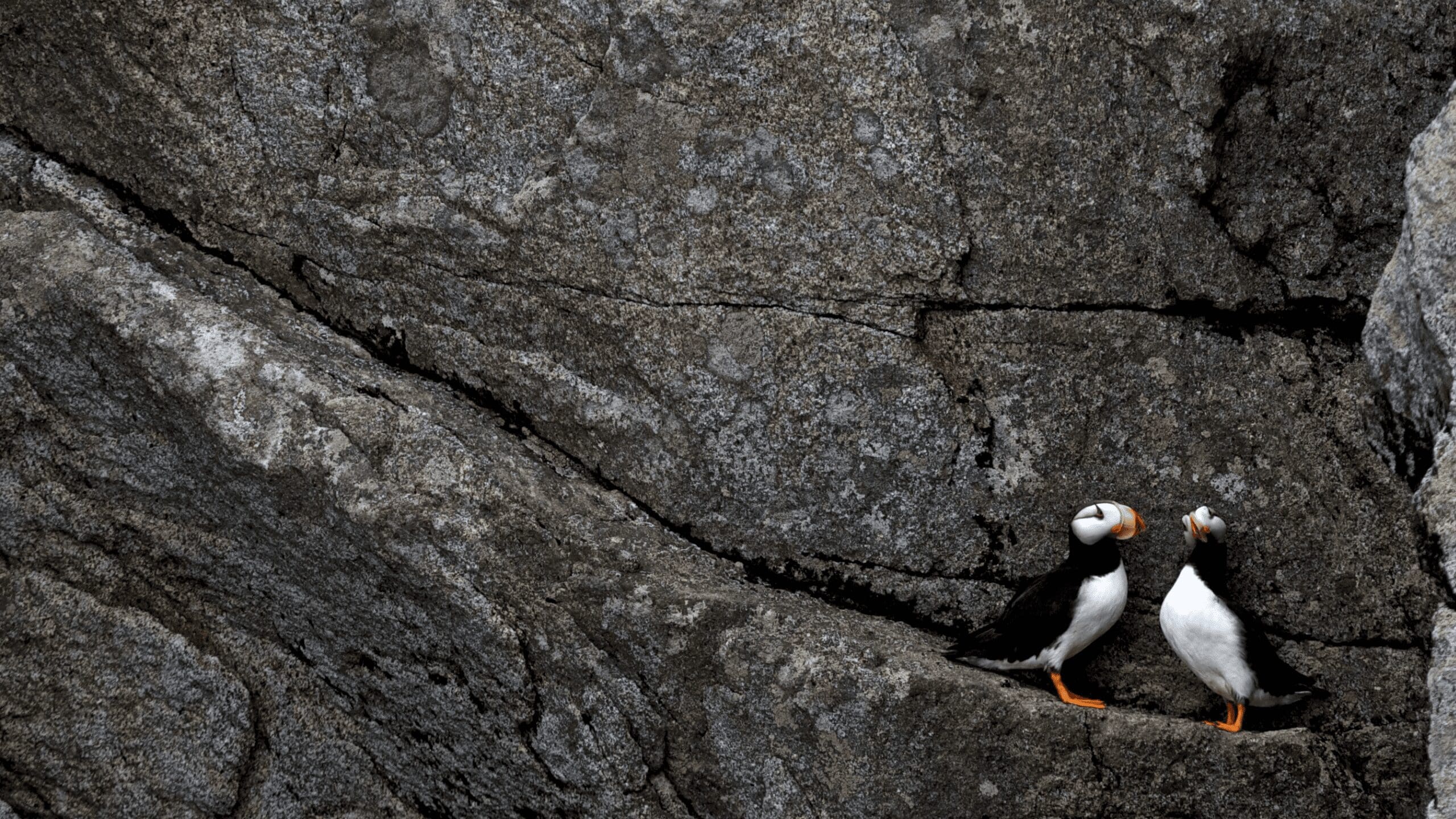Posted: April 17, 2023
Our Wildlife of the Week – 2023 Week 16…
Meet the “Horned Puffin”!
(Fratercula corniculata)
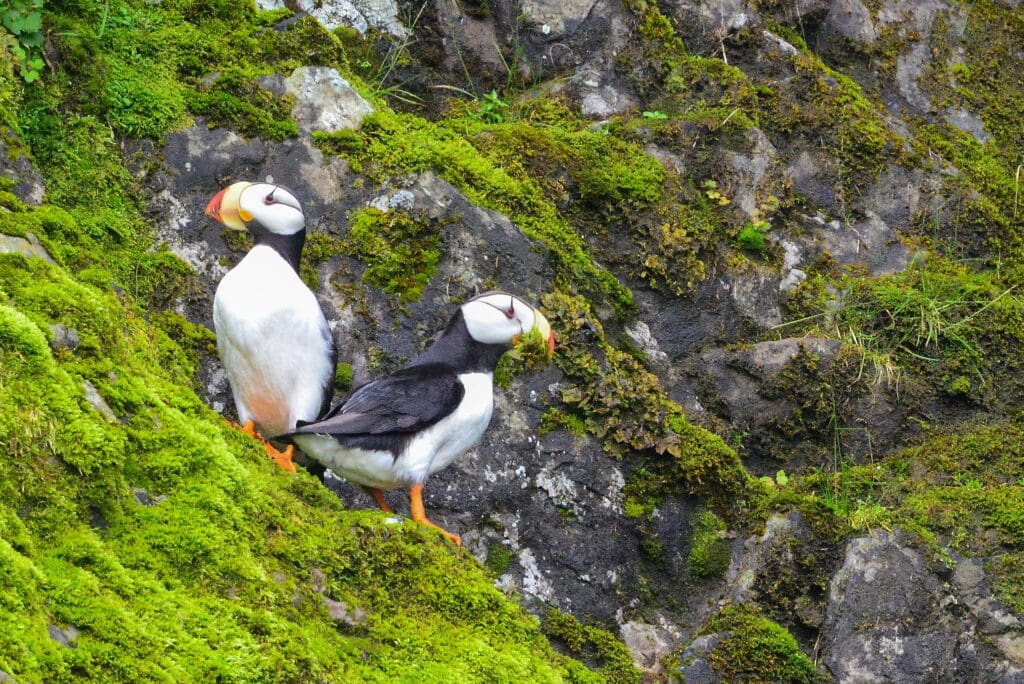
Table of Contents
Horned Puffin Physical Description
Horned Puffins have chests and white bellies. The “horns” are black fleshy spikes above each eye. Their bills function like pipe wrenches, opening wide to allow them to carry many fish at one time. The bills of immature and non-breeders are dark, as are their check patches, but their bellies are always white. They do not dig borrows, but nest on cliffs.1
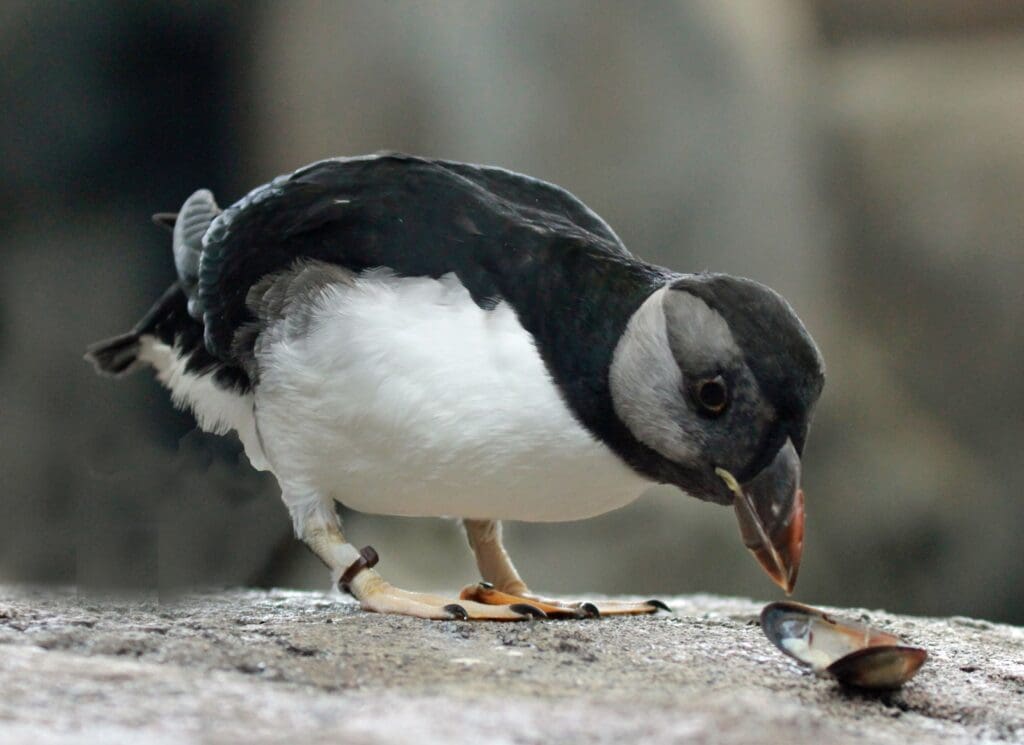
Horned Puffins have an average weight of 20.48 to 22.84 oz (581 to 648 g). They have an average wingspan of 7.31 to 7.86 in (185.7 to 199.6 mm).2 As with all seabirds, both sexes help raise their one chick.1 The chicks have smoky-gray cheeks and a fine, black triangular-shaped beak. The feet are pinkish or greyish. The juvenile’s height is less than that of the adult at the time of leaving the nest. Young puffins lose their greyish facial spots during their first springtime.3
SPONSORED ADVERTISEMENT
Horned Puffin In Action
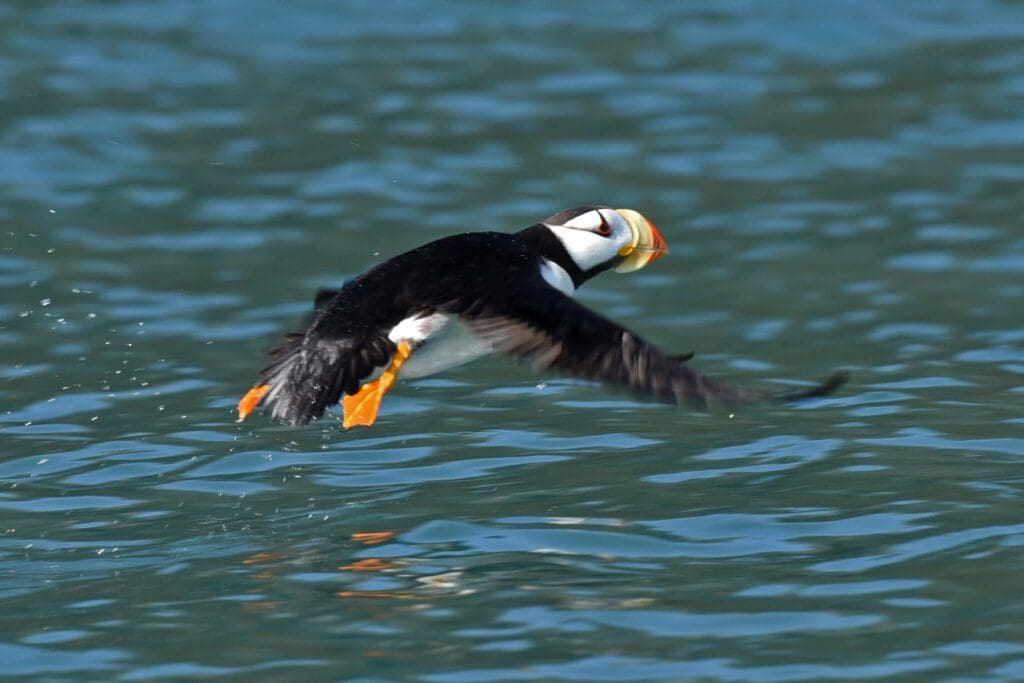
Horned Puffins are usually not vocal but become so when they are threatened. They are diurnal (of or during the day), and peak time for them to be on land is between 8am and 12pm. They do not interact with others in their colonies. They are nomadic and move from breeding grounds when they are too iced over.2
The densities of Horned Puffin colonies are determined by nest site availability. The higher the breeding site above the water, the less favorable it is considered to be. They winter close to the breeding grounds and individuals are interspersed at low densities. Over-wintering locations and patterns, however, are poorly known.2
Their flight is characterized by a quick take-off. After taking flight these birds beat their wings in a rapid yet shallow pattern. They fly at least 100 feet (~30 meters) above the sea.2
SPONSORED ADVERTISEMENT
Where to Spot Horned Puffin
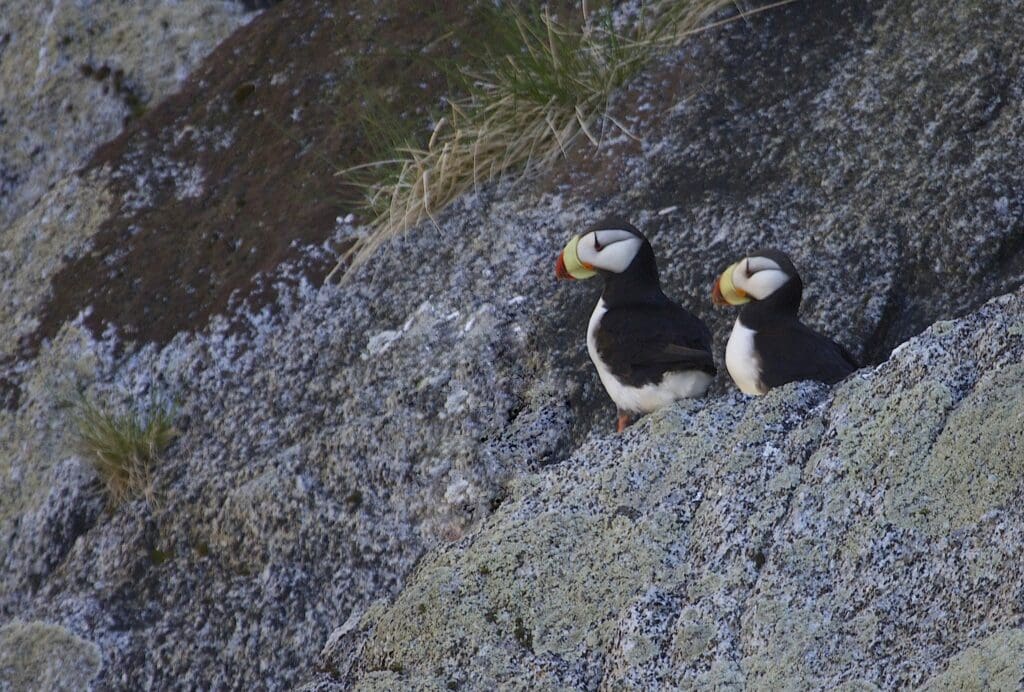
Horned Puffins, are widespread in the Pacific and low Arctic. In Alaska, 50% percent of all individuals live 56 miles (90 km) from the mainland of the west coast, on the Semidi Islands.2
They nest in bluffs of fractured rock or crevices in cliff faces near the shoreline. They may also create burrows in upland areas. They forage off shore close to their breeding colonies, spending most of the year in coastal waters. They show no preference with respect to water temperature or salinity. They winter off-shore, preferring open water areas with large populations of the pelagic fish on which they feed.2
The Horned Puffin can be found in over 7 National Parks and many other National Park Service sites.4 Including:
- Channel Islands National Park
- Glacier Bay National Park and Preserve
- Katmai National Park and Preserve
- Kenai Fjords National Park
- Lake Clark National Park and Preserve
- Olympic National Park
- Redwood National & State Parks
SPONSORED ADVERTISEMENT
Horned Puffin Conservation Status
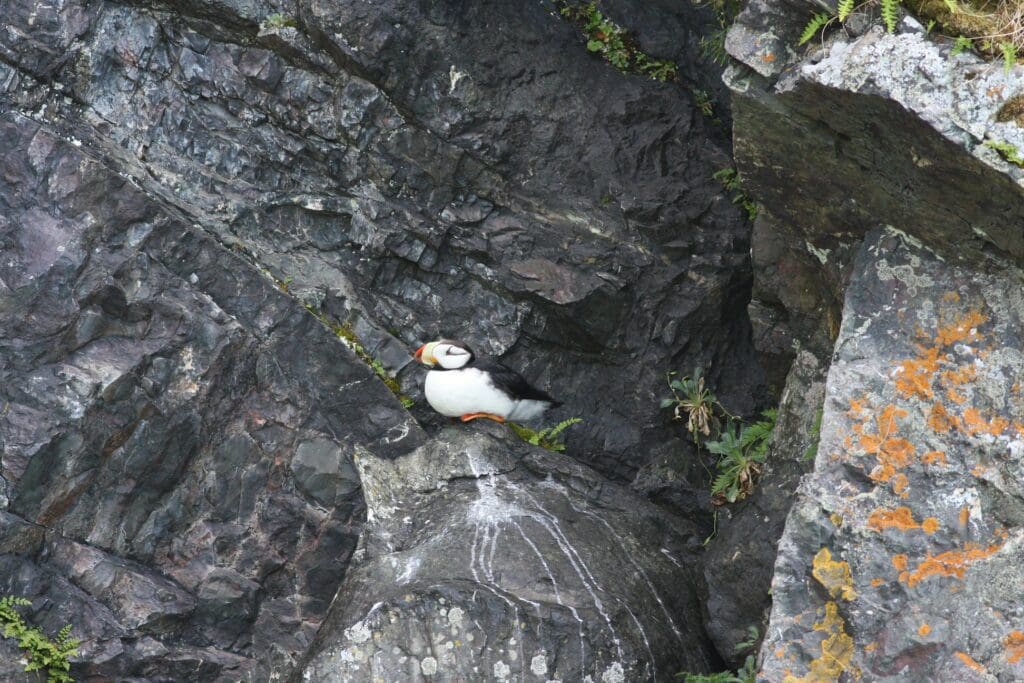
Horned Puffin populations are of Least Concern on the IUCN Red List. The estimated breeding population today is 1.2 million birds, with most breeding on islands off the coast of Alaska. The largest breeding populations are in the Semidi Islands with 350,000 breeders. Breeding numbers appear to have dropped from 1977 to well into the mid 1990’s.2
Alaskan Natives used for food and clothing. Parkas are made from the tough skin of this auk and the feathers provide the natives with further insulation. The eggs are still collected as food in the Bering Straight region with minimal effect on the populations. They are also the focus of tourism in some regions of Alaska.2
Horned Puffin and You
Have you seen a Horned Puffin in it’s natural environment? Tell us about it in the comments below!
Do you have a picture of these amazing creatures? Share it on social media with us and tag us in your post.
Use the hashtag:
#WildlifeOfTheWeek.
Interested in Wildlife Photography???
Check out this amazing beginners guide from National Geographic:
National Geographic Photo Basics The Ultimate Beginner’s Guide to Great Photography
The above links are provided in this article as affiliate links. Meaning, at no additional cost to you, we’ll earn a commission if you click one and make a purchase. An easy way to help support us if you’re going to buy anyway!
Learn more about all the amazing wildlife in our National Parks and how to safely “Watch Wildlife” on this amazing page with lots of resources from the National Park Service!
Want tips for photographing wildlife? Check out this great article for tips from the National Park Service.
Help support Discover Our Parks by becoming a Patron for as little as $1 a month! Your support will help us continue to provide articles like this and add even more information about our parks to this site.
If you want to make a one-time donation, buy us a coffee!
‘We got some of the above information from the following:
1: NPS.gov – Birds of South Marble: Horned Puffin
2: Animal Diversity Web – Fratercula corniculata – Horned Puffin
3: Wikipedia – Horned Puffin
4: NPSpecies – Find Parks Where a Species is Found
Check out these recent posts from Discover Our Parks:
- The Isolated Black-bellied Salamander: Wildlife of the Week – 2023 Week 22
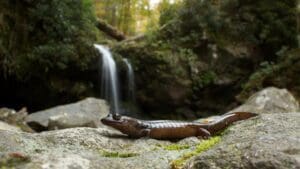
- The Splendid Sandhill Crane: Wildlife of the Week – 2023 Week 21
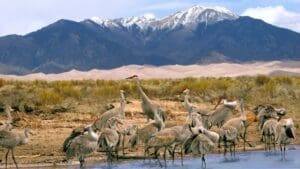
- The Promising Peregrine Falcon: Wildlife of the Week – 2023 Week 20
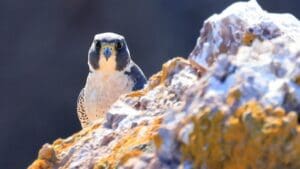
- The Intimidating Killer Whale: Wildlife of the Week – 2023 Week 19
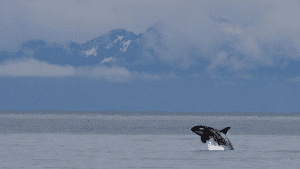
- The Swift Fox: Wildlife of the Week – 2023 Week 18
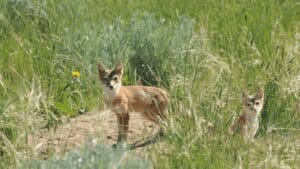
SPONSORED ADVERTISEMENT

